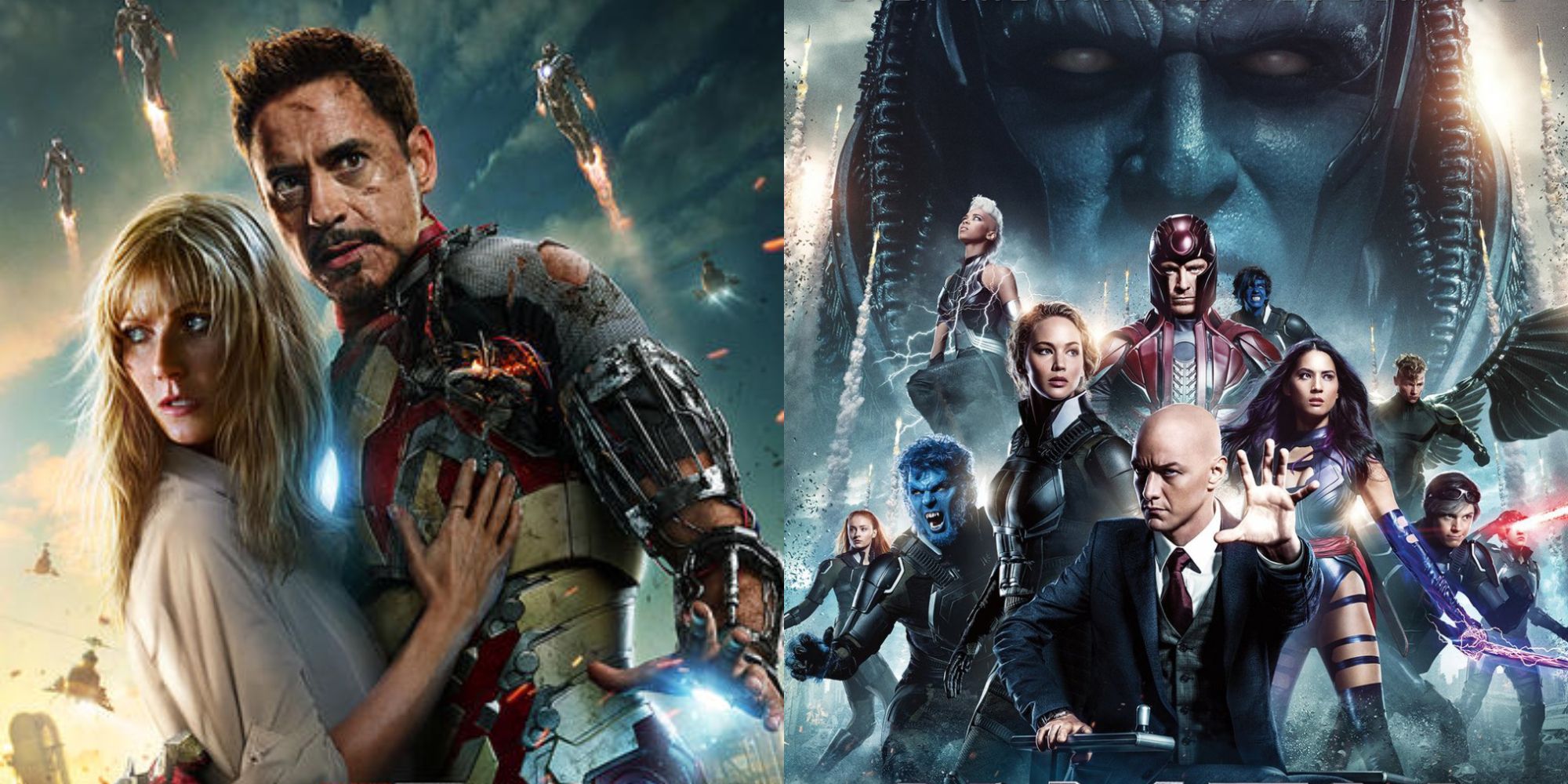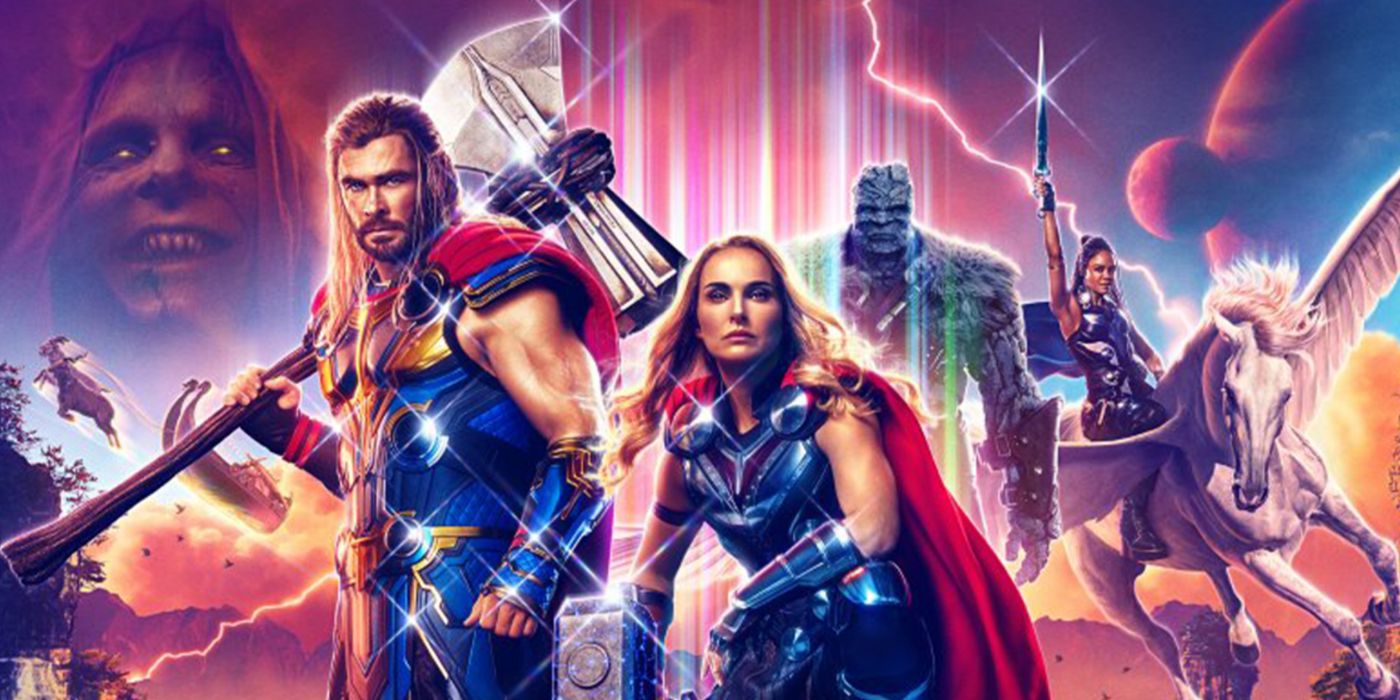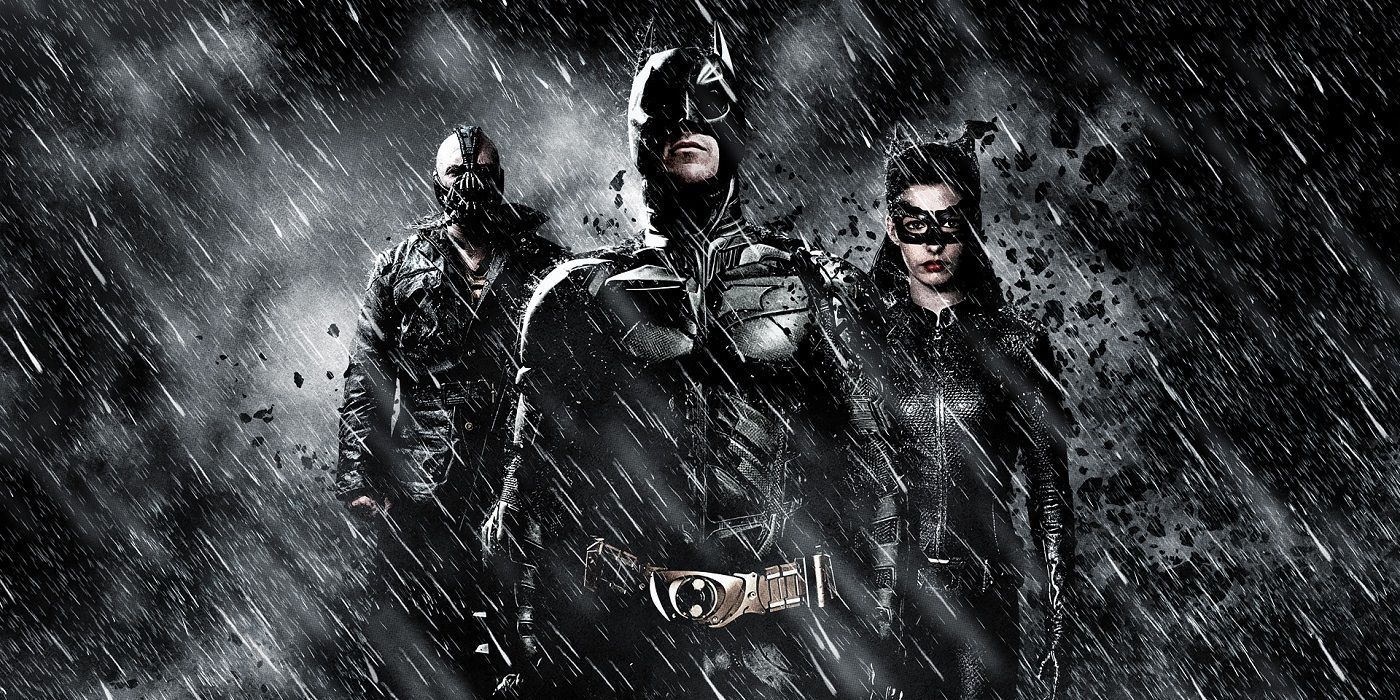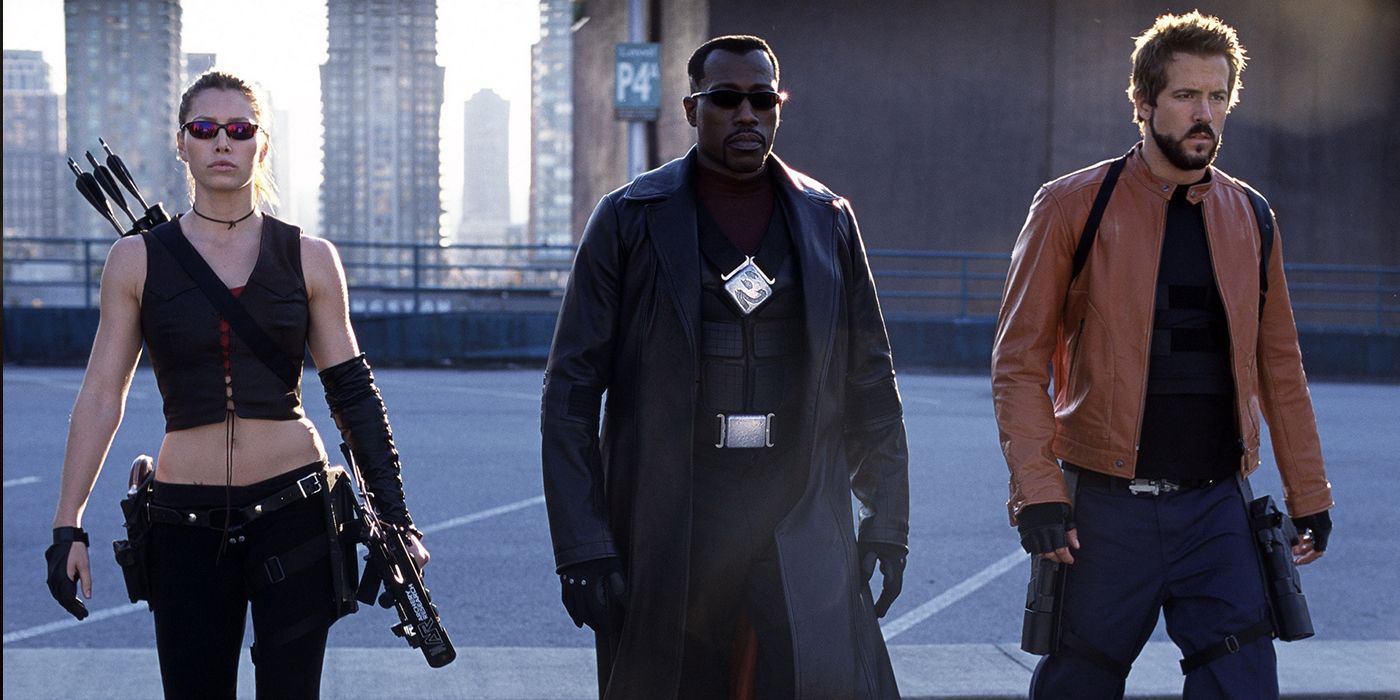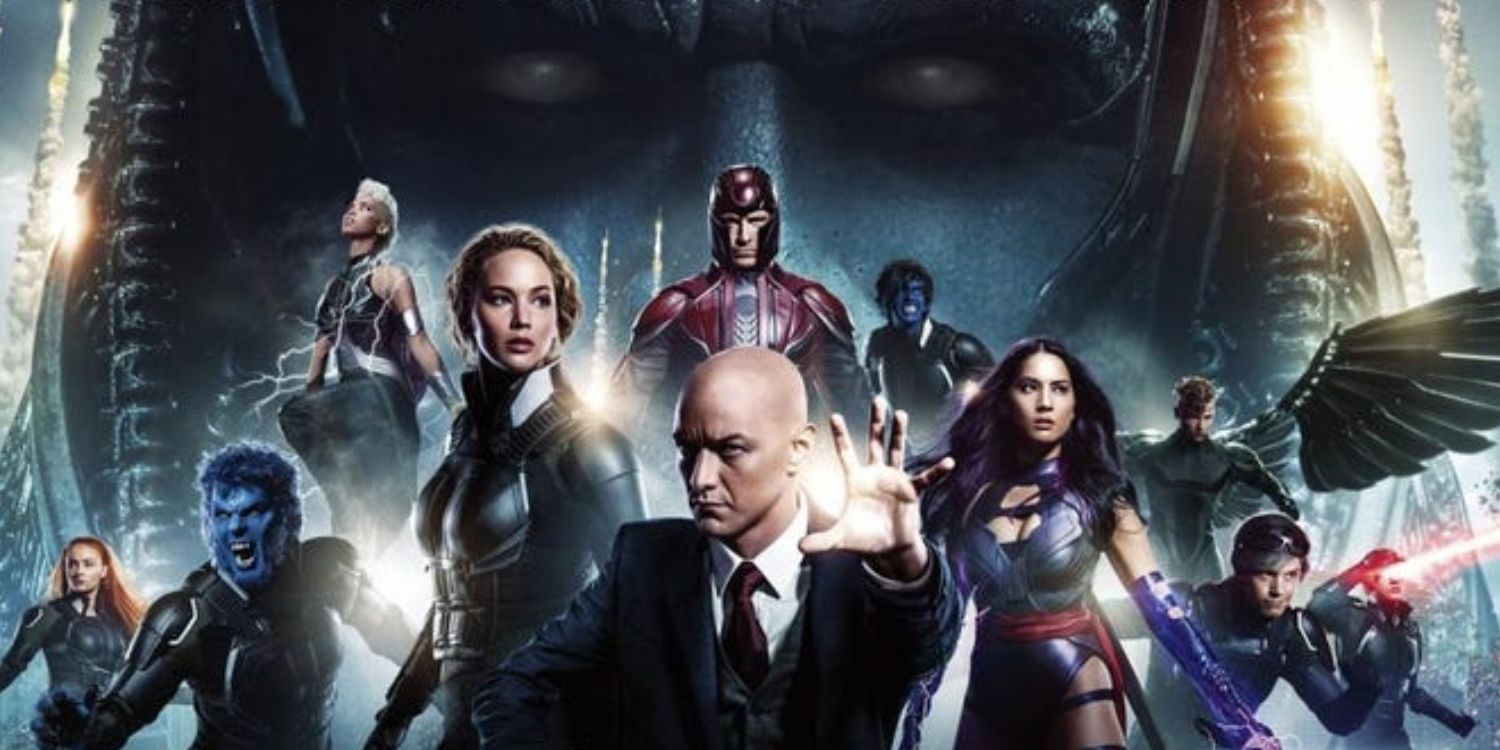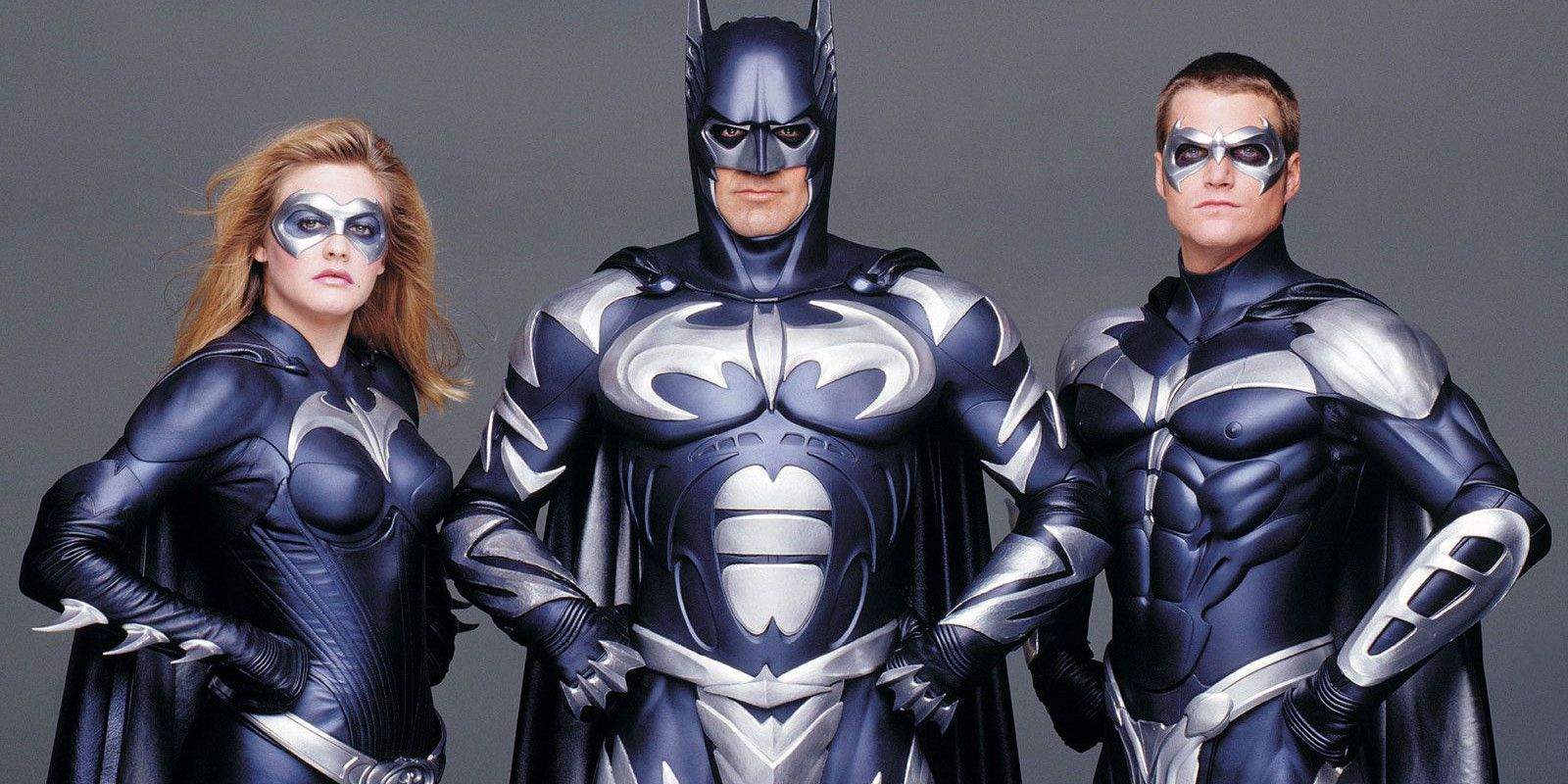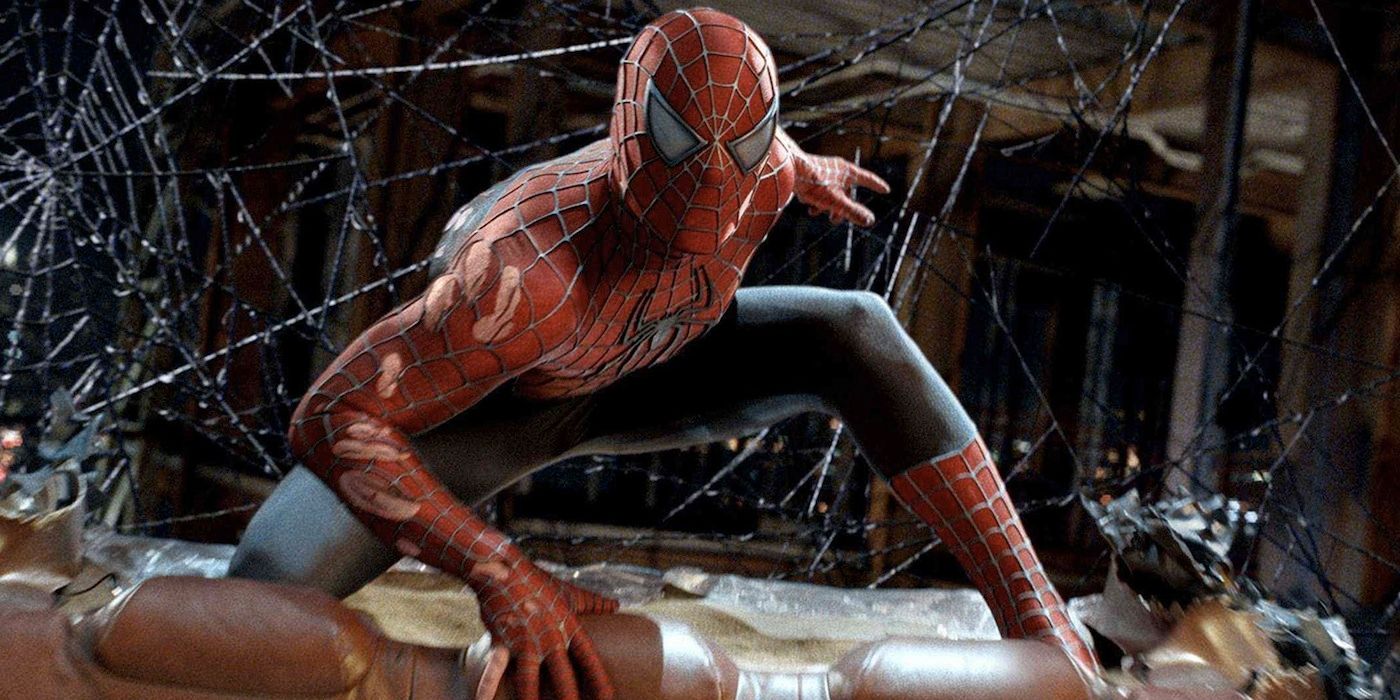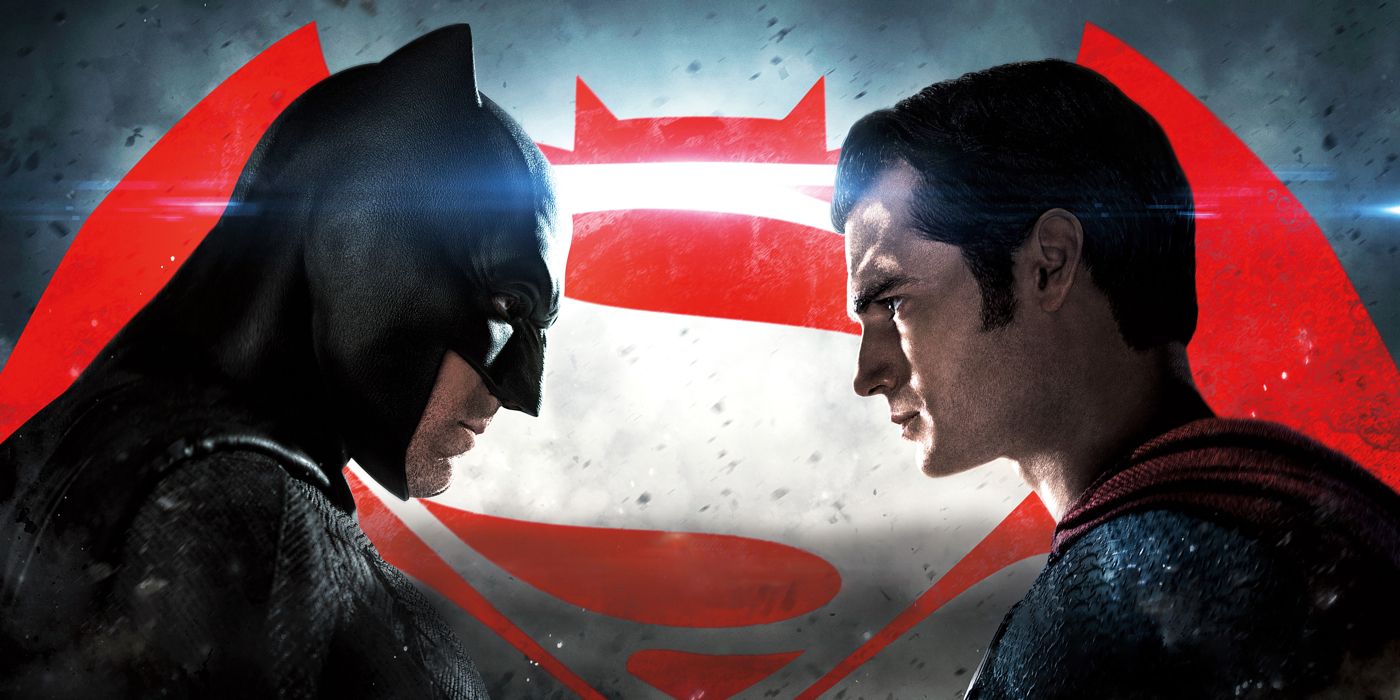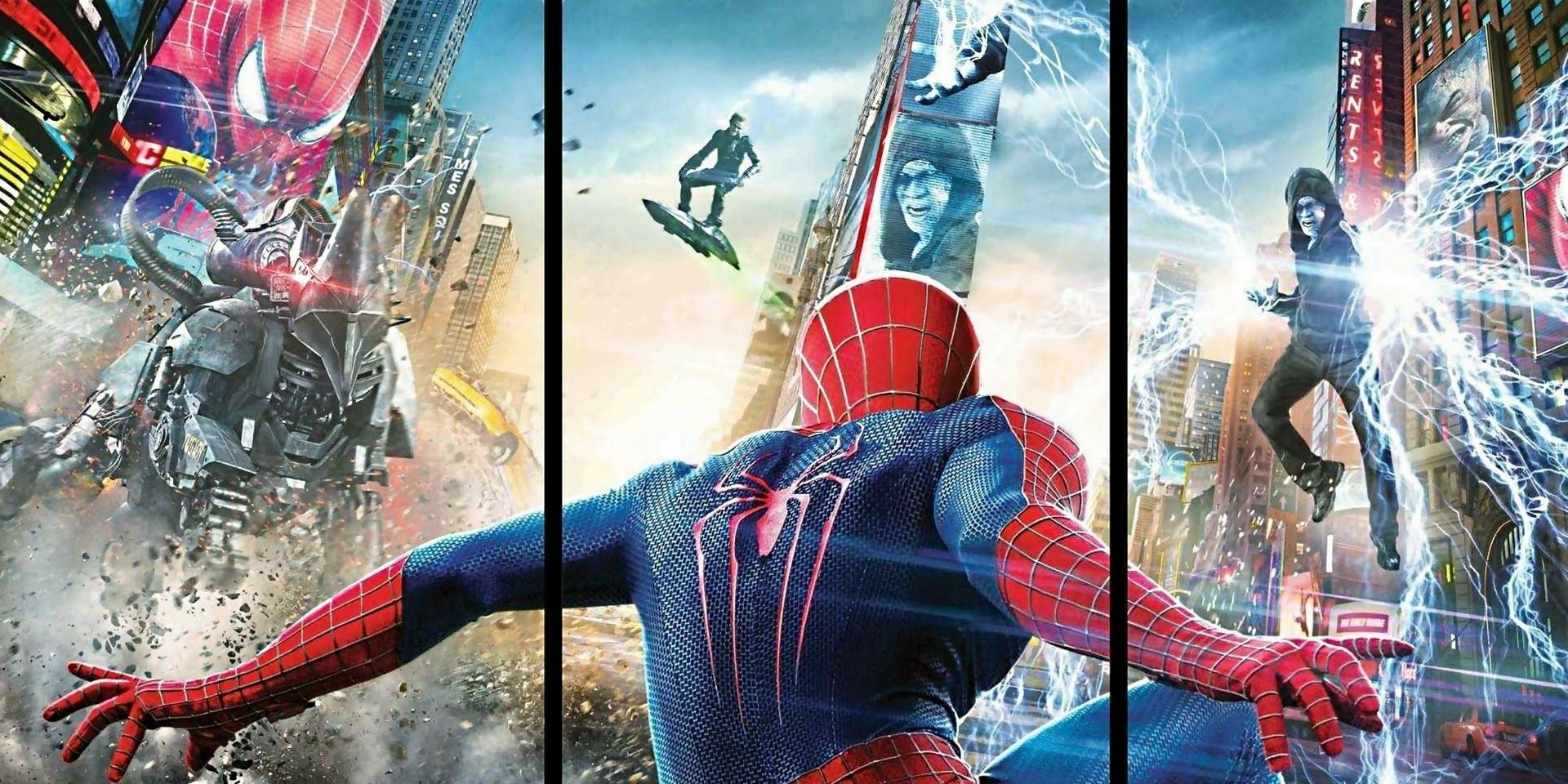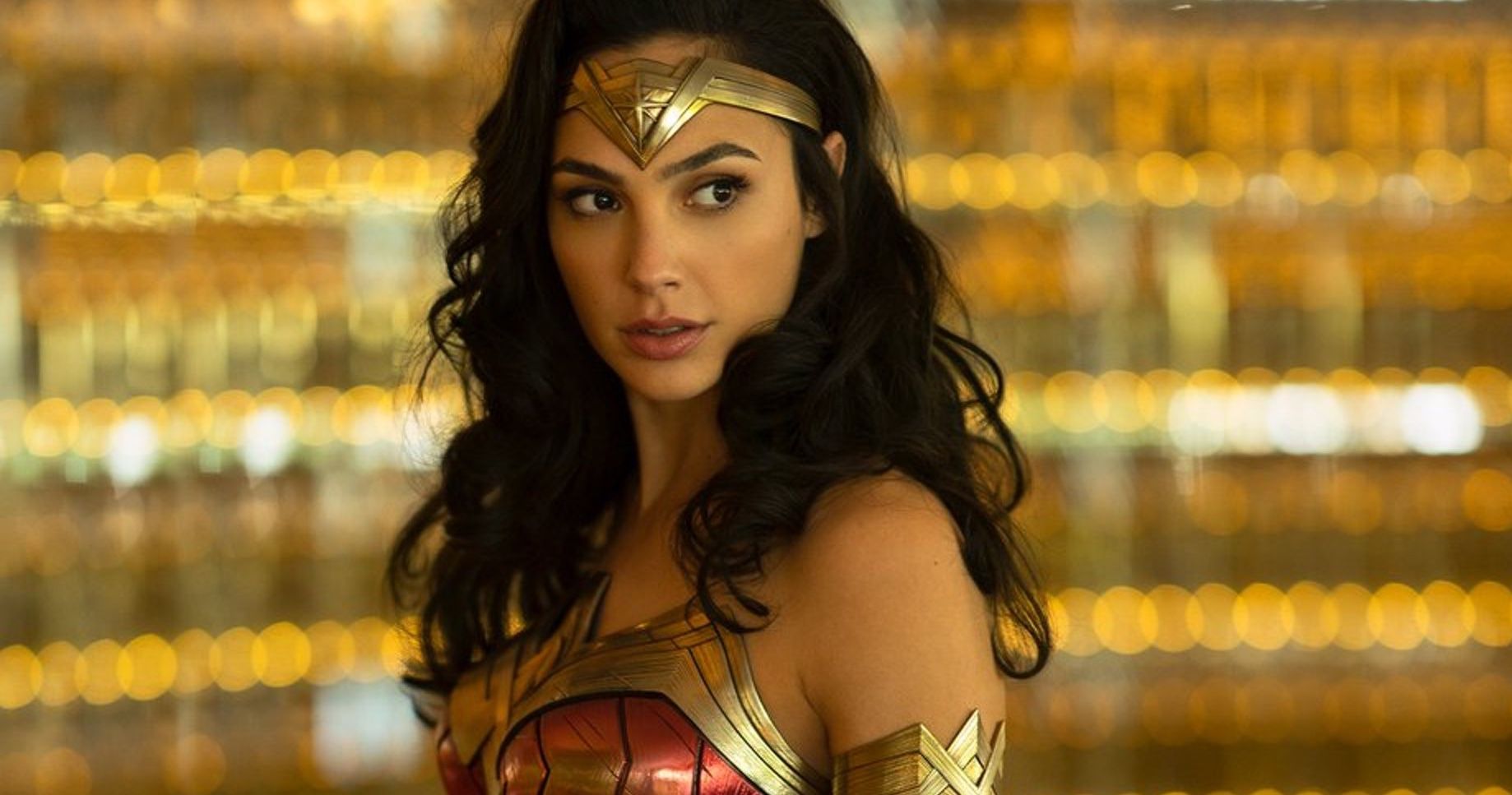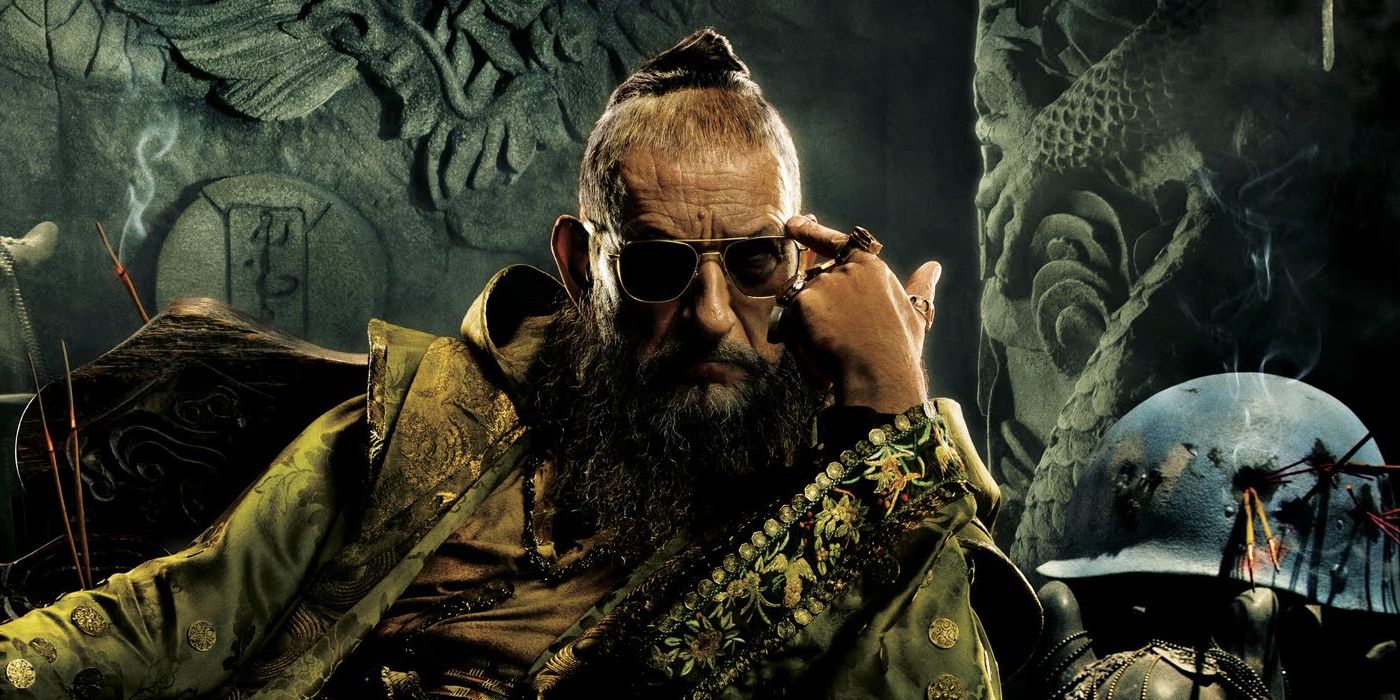Superhero films dominate the current cinematic landscape. Led by the seemingly unsinkable Marvel Cinematic Universe, the genre is thriving, launching film after film starring a carousel of mighty heroes in tights.
Still, not every superhero film hits the mark, even these days. Recent examples such as Thor: Love and Thunder proved these films are still susceptible to going overboard. Excess leads to chaos, prompting these stories to jump the shark in the eyes of fans and critics. And while some of these movies weather the storm, others fail and even derail their entire franchises.
Thor: Love And Thunder (2022)
Taika Waititi revitalized the Thor series with the colorful and over-the-top Thor: Ragnarok. However, his schtick grew tiresome with the following effort, Thor: Love and Thunder, a film that achieved none of Ragnarok's effortless laughs.
Everything in Love and Thunder seems contrived and superficial. The jokes are generic, and the plot tries but fails to achieve emotional resonance. However, the climactic battle in which Thor empowers a group of children to fight in his battle is the moment when the film truly loses itself in a mess of its own making.
The Dark Knight Rises (2012)
Christopher Nolan redefined what a superhero blockbuster could be, say and mean with his 2008 masterpiece, The Dark Knight. However, the overblown and ultimately disappointing sequel, The Dark Knight Rises, was an exercise in excess, the cinematic equivalent of a victory lap before the race was over.
Not all is bad. Many things about The Dark Knight Rises still hold up today. However, the film succumbs to traditional trilogy tropes, delivering a bigger film that rings hollow compared to its layered and thought-provoking predecessor. The film's treatment of Bane is disappointing, but its third-act battle and an uninspired twist make it jump the shark. The out-of-place Robin reveal at the end cemented its dubious reputation.
Blade: Trinity (2004)
Casting Wesley Snipes as Blade was an inspired choice. The actor delivered one of the most genuine and effortless performances in a genre where naturalism is hard to find. Snipes is cool and confident as Blade, qualities the first two films in the trilogy have in abundance.
Things changed with Blade: Trinity, a film that incorrectly believes bigger is always better. Not even Snipes can save this mess of a film, full of boring narrative choices and annoying characters. The film's action pales compared to its two predecessors, featuring set pieces that seem straight out of the Joel Schumacher school of action scenes.
X-Men: Apocalypse (2016)
The X-Men movies always struggled with consistency. However, First Class and Days of Future Past were among the best superhero films of their time, so expectations for X-Men: Apocalypse were high. Unfortunately, the film indulges in all the excesses of the superhero genre, perhaps believing itself too big to fail.
Apocalypse features a relatively straightforward plot but a villain so one-dimensional that it's hard to care about any of his supposed world-ending antics. However, the moment the film goes overboard is when Magneto destroys the Auschwitz concentration camp, a moment that must've seemed daring on paper but is questionable in execution and uncomfortable to watch.
Batman & Robin (1997)
Tim Burton approached his Batman series with a gothic sensibility also informed by art deco trappings, resulting in two stylized and very rewatchable films. Warner Bros. opted for a more light-hearted approach with the sequels, hiring Joel Schumacher. The director succeeded in making the films sillier at the expense of the character's reputation.
There's a certain guilty-pleasure quality to Batman Forever, and Val Kilmer is a surprisingly haunting Bruce Wayne. However, Batman & Robin is aggressively bad, featuring a ridiculous tone and plot that bastardize the source material. Batman pulls out credit cards, skates, and delivers dumb one-liners during battle. In their misguided effort to make the series more kid-friendly, Schumacher and Warner nearly burned the franchise to the ground.
Spider-Man 3 (2007)
Sam Raimi's Spider-Man trilogy remains an influential part of the superhero genre. It arguably shaped how audiences consume superhero blockbusters, turning them into the spectacles of the millennial generation. However, it's not perfect because the first two movies get better over time, but the third one brings them down.
Time has been kind to Spider-Man 3, but fans remain divided about its tone and narrative choices. Its treatment of Venom is the thing that ultimately dooms it, though. Raimi and company delivered an uninspired take on the iconic character, wasting one of Spidey's most compelling villains and dooming the Spider-Man series in the process.
Batman V. Superman: Dawn Of Justice (2016)
Batman v. Superman: Dawn of Justice could be a great film if only it had more focus. However, by trying to tell so many stories in so little time, it fails all of them and its iconic characters, too. Somewhere, buried under a pile of unnecessary Lex Luthor pretentiousness, is a compelling story about the inherent differences between Batman and Superman and how they ultimately learn to work together.
However, the film tries to have its cake and eat it, too, insisting on cramming Luthor and his convoluted plot. By the time Doomsday shows up, the film has officially entered "nuke the fridge" territory. The DCEU made several mistakes in trying to build its cinematic universe, but trying to cover too much ground is by far the worst.
The Amazing Spider-Man 2 (2014)
The Amazing Spider-Man was not groundbreaking by any means, but it featured a great performance by Andrew Garfield and a sufficiently entertaining plot to justify its existence. However, the sequel failed to set up its ambitious universe by trying to do too many things simultaneously.
To its credit, The Amazing Spider-Man 2 does feature the incredible chemistry between Garfield and Emma Stone. However, it's not enough to save an otherwise aimless story overflowing with narrative elements that never quite fit together. The third act, in which Spidey fights two underdeveloped villains in a row, is the film's breaking point, and not even the emotional impact of Gwen Stacy's death can save it.
Wonder Woman 1984 (2020)
The first Wonder Woman film was a pleasant surprise, a breath of fresh air in the increasingly disappointing DCEU. Whereas previous films in the struggling universe went out of their way to seem gritty, Wonder Woman was unapologetically positive and bright. Fans and critics had high hopes for its sequel. Alas, Patty Jenkins and company couldn't deliver.
Wonder Woman 1984 doesn't know what it wants to be. It tries to embrace the '80s aesthetic and vibe but refuses to commit to the inherent sense of camp that goes hand-in-hand with it. The result is an amorphous film that thinks itself serious and emotional but comes across as silly and repetitive. The climax, where Wonder Woman wins through the power of kindness, is borderline ridiculous, considering the mixed messages the DCEU sent about her character.
Iron Man 3 (2013)
Iron Man built the Marvel Cinematic Universe. That much is true. However, both sequels to the 2008 original indulged the worst aspects of the superhero genre, becoming a parade of bombastic set pieces that were cool to look at but packed no emotional punch whatsoever. But whereas Iron Man 2 settled for mediocrity, Iron Man 3 took a big swing and failed spectacularly.
Marvel advertised the film as including the Mandarin, played by Oscar winner Sir Ben Kingsley. However, it pulled a twist by revealing Kingsley's character as an actor posing as the Mandarin. Fans and critics had a divisive reaction to the twist, and while Marvel taking any risk is always welcome, this one was objectively bad. It's no surprise Iron Man didn't return for a fourth solo outing. The Mandarin twist single-handedly proved the series had run out of ideas.

